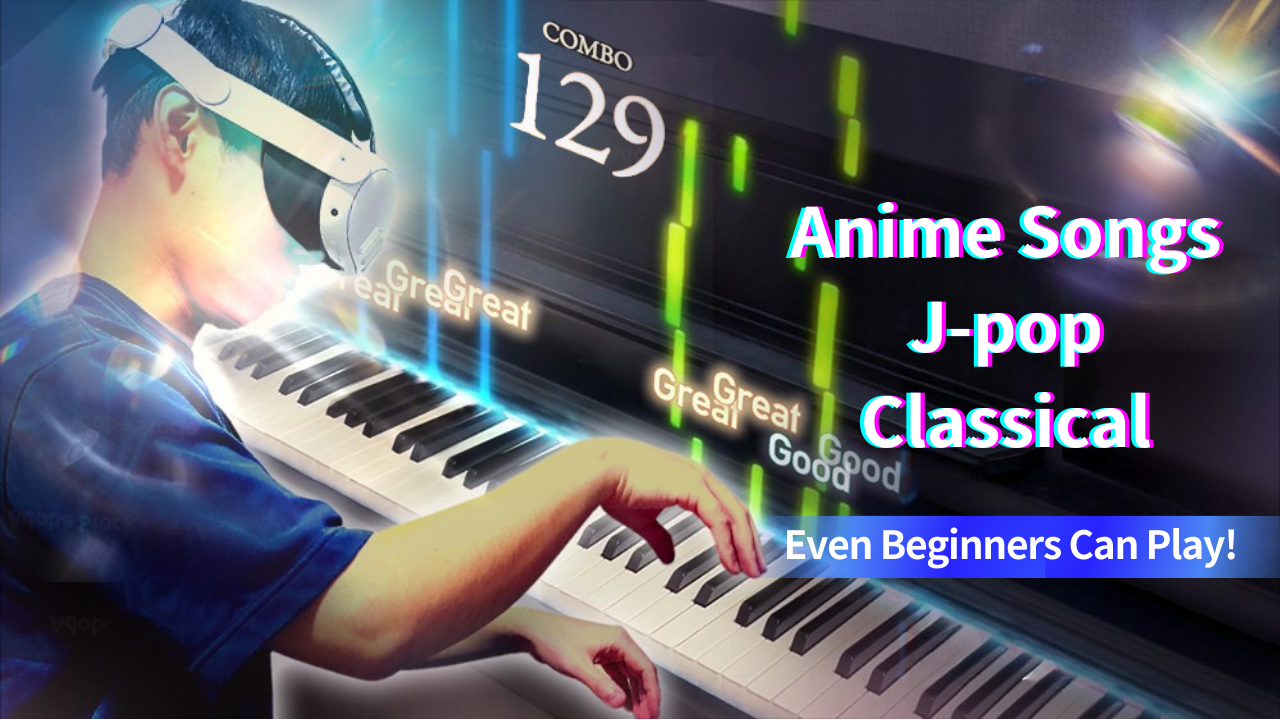When trying to start learning piano on your own, you may find unexpected hurdles such as learning how to read sheet music and securing enough practice time.
However, in the VR piano game, the notes that appear in front of you indicate the next key to press, allowing even beginners who can’t read sheet music to play intuitively.
This page will explain why traditional piano learning methods are considered difficult, and how the VR piano game has achieved true “simplicity.”
3 Reasons Why Traditional Piano Learning Was Difficult
First, here are the main reasons why traditional piano learning often leads to giving up:
1. Unable to Read Sheet Music
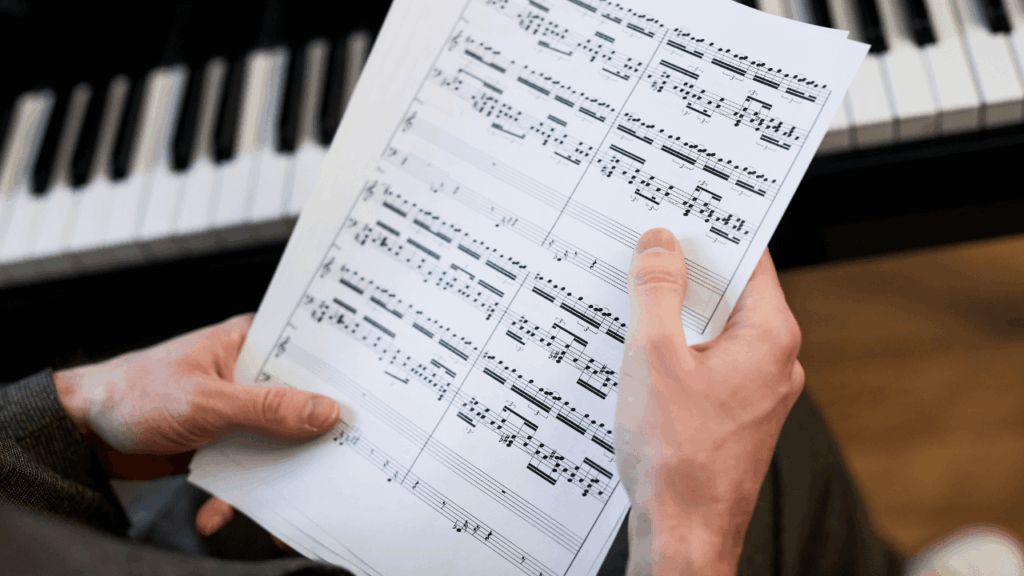
Before even playing the piano, beginners faced the huge hurdle of having to learn how to read sheet music.
It takes time to develop the ability to read sheet music quickly and accurately, and many people give up before reaching smooth reading ability.
2. Practice is Monotonous and Boring / Hard to Continue
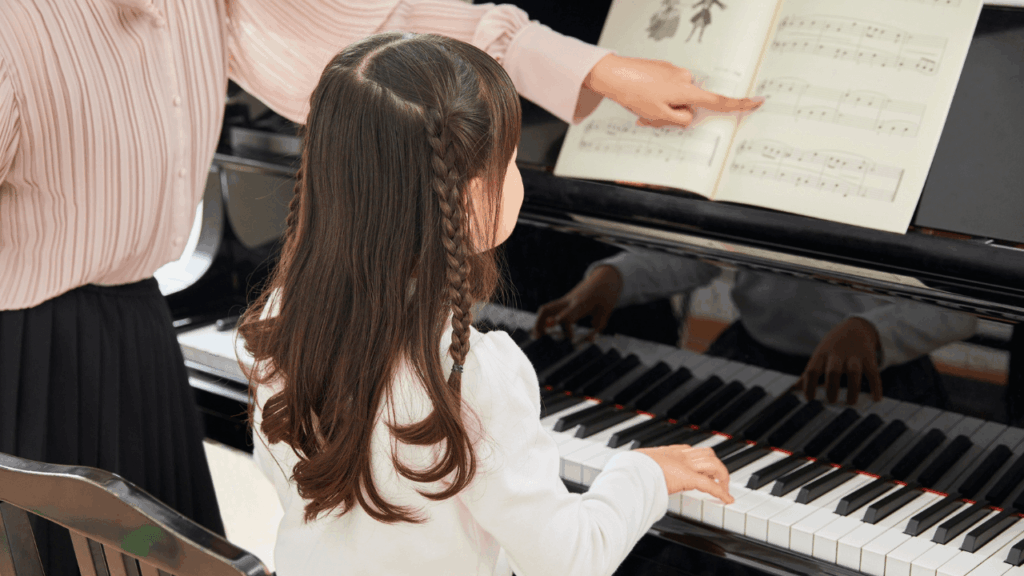
Another problem is that practice tends to become monotonous. Repeating the same phrase makes it difficult to feel a sense of achievement, so many people quit without ever experiencing the “feeling of progress.”
In addition, many practice songs are uninteresting, and the long path to finally playing your favorite song is another reason people give up easily.
3. Fingers Don’t Move as Expected
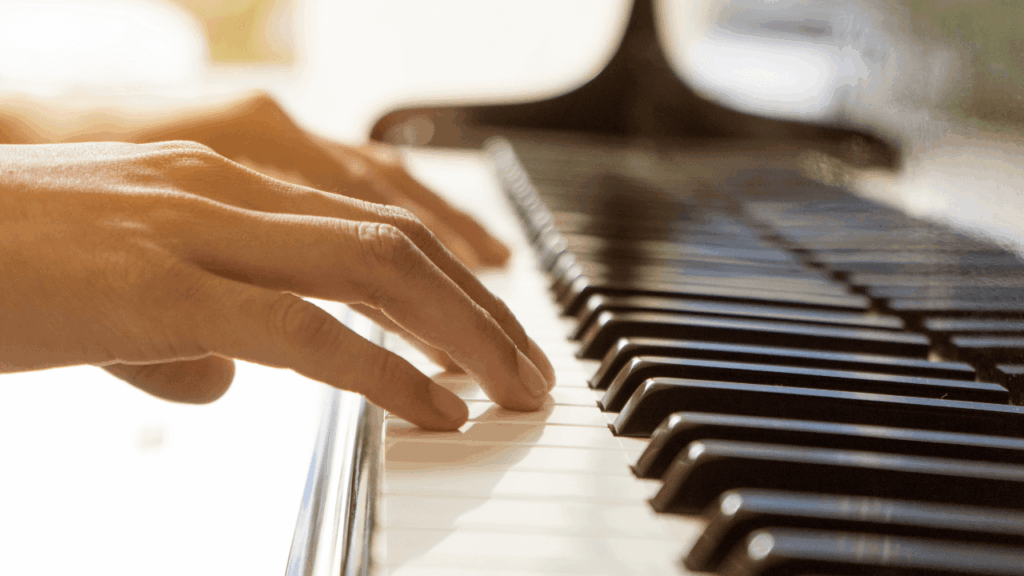
Beginners who just started playing or adults who restart piano often find that their fingers don’t move as they want.
Moving both hands separately also feels very difficult for beginners.
How the VR Piano Game Solves These 3 Problems
1. No Sheet Music Needed with Key Guides!!

In the VR Piano Game “Sigure,” notes (sound bars) appear above the piano, showing in real time which key to press next.
With this visual guide, you can easily play without training to read sheet music, and you don’t feel the stress of searching for notes on a score.
2. Maintain Motivation with a Game-like Experience
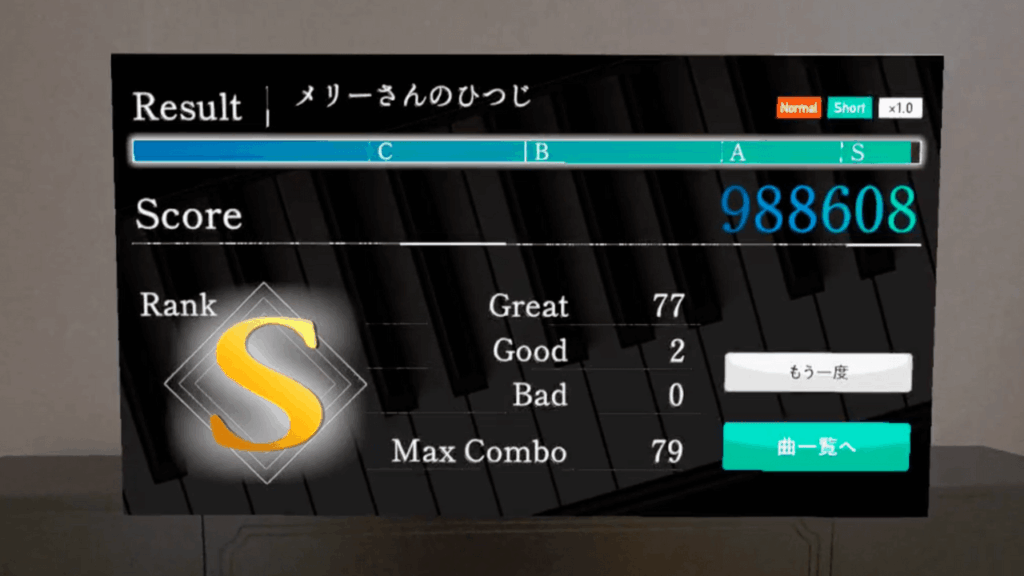
In the VR piano game, you can play on a real digital piano in a rhythm-game style. It includes not only famous classical pieces but also many J-POP songs, so you can practice with the music you love.
Performance results are instantly shown as scores and combo counts, encouraging “just one more try” and making practice easier to continue voluntarily.
3. One-Hand Practice Modes and Step-Up Programs

To prevent beginners from giving up when their fingers don’t move well, the VR piano game includes modes to practice one hand at a time and step-up improvement programs that gradually increase in level.
Even complete beginners often say, “I played a song on the first day!” Compared with traditional piano learning, starting piano has become much easier.
[Experiment] Can a Beginner Play “Katatsumuri” in 30 Minutes?
We had a beginner try to see if they could play within 30 minutes.
Of course, at first they couldn’t play at all and couldn’t move their hands separately, but by first practicing only the right hand, then only the left hand, and finally combining them, they were actually able to play in just 30 minutes!
It works not only as a rhythm game but also as a strong piano learning app, so if you’re interested in piano, we encourage you to try it for practice.
Price, Supported Devices, and How to Start
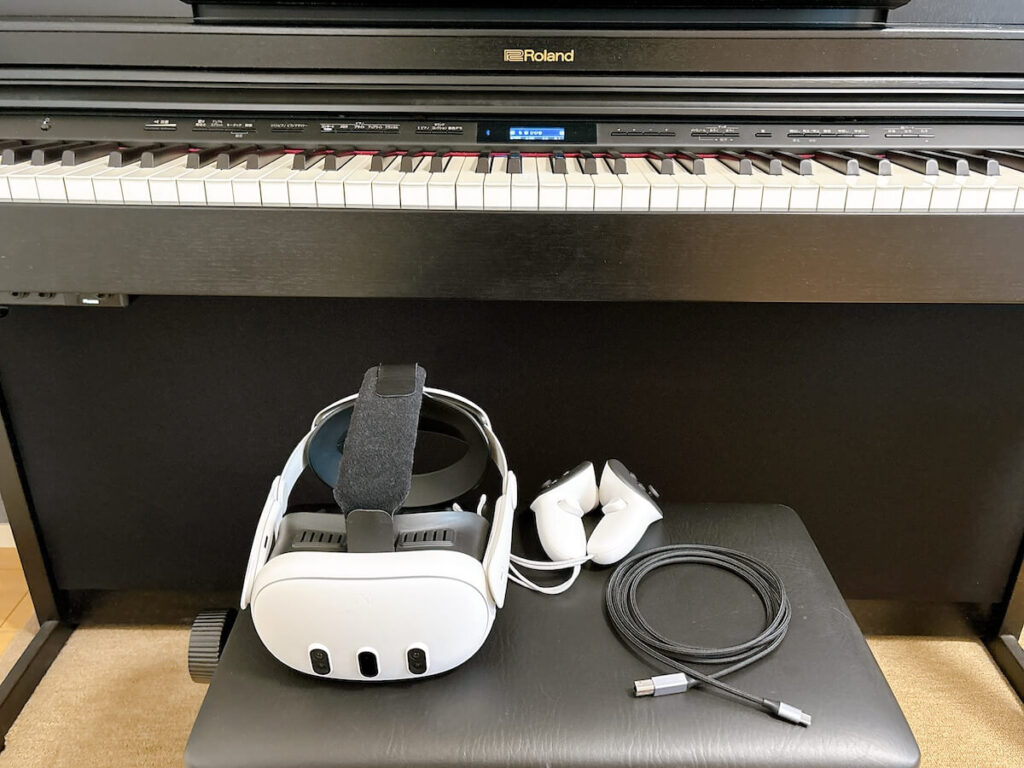
The current compatible VR headsets are Meta Quest 3 / 3s. The app itself is a one-time purchase of 1,800 yen, with additional songs available for 400–600 yen each.
As for digital pianos, any model with a MIDI port can be used, regardless of the number of keys. Together with a MIDI cable, the total cost is usually about 60,000–90,000 yen.
Frequently Asked Questions
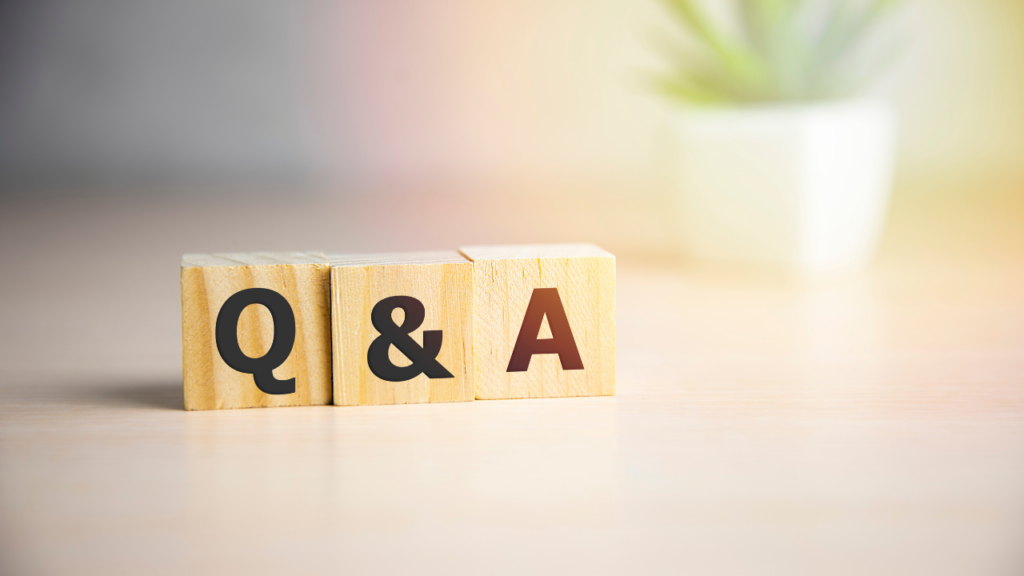
Q. Is a VR headset necessary?
A. Currently, “Sigure” requires the VR headset “Meta Quest 3” or “Meta Quest 3s.”
Q. Can I play J-POP songs with both hands even if self-taught?
A. Yes! Even if you can’t read sheet music, you can start from day one, and one-hand practice with auto-accompaniment makes it fun to practice.
We often hear comments like, “I played a song on the first day!” and “I can play my favorite J-POP songs now!”
Q. Can children use it?
A. It is intended for users aged 10 and above. Technically, Meta Quest is designed for ages 13+, but with a parent-managed Meta account, children aged 10–12 can also use it.
Piano Should Be Fun and Easy!
The VR piano game “Sigure” removes the three biggest hurdles of traditional piano learning!
- Can’t read sheet music → Play intuitively with falling notes
- Dull basic practice → Game-like play with endless score attacks
- Fingers don’t move well → Improve gradually with favorite songs and step-up programs
We hope beginners will feel that “piano is actually easy,” and even those who once gave up can enjoy playing again!

